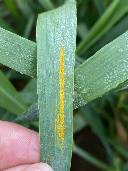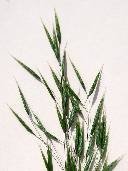Wheat Management Calendar
Published Apr. 2020|Id: L-490
By
Amanda de Oliveira Silva, Brian Arnall, Hailin Zhang, Tom Royer, Bob Hunger, Misha
Manuchehri
| ID | Title | URL |
|---|---|---|
| DASNR App Listing | Wheat Variety Selection Tool app | http://www.dasnr.okstate.edu/apps |
| CR-2143 | 2018-2019 Small Grains Variety Performance Tests; | https://extension.okstate.edu/fact-sheets/2018-2019-small-grains-variety-performance-tests.html |
| PSS-2142 | Wheat Variety Comparison; | https://extension.okstate.edu/fact-sheets/wheat-variety-comparison.html |
| PSS-2256 | Factors Affecting Wheat Germination and Emergence in Hot Soils; | https://extension.okstate.edu/fact-sheets/factors-affecting-wheat-germination-and-emergence-in-hot-soils.html |
| PSS-2147 | First Hollow Stem: A Critical Wheat Growth Stage for Dual-purpose Producers; | https://extension.okstate.edu/fact-sheets/first-hollow-stem-a-critical-wheat-growth-stage-for-dual-purpose-producers.html |
| PSS-2157 | Impact of Grazing on Wheat Grain Yield | https://extension.okstate.edu/fact-sheets/impact-of-grazing-on-wheat-grain-yield.html |
| Factsheet ID | Title | URL |
|---|---|---|
| CR-2277 | Applying Nitrogen-Rich Strips | https://extension.okstate.edu/fact-sheets/applying-nitrogen-rich-strips.html |
| PSS-2278 | Using the GreenSeeker Handheld Sensor and Sensor-Based Nitrogen Rate Calculator | https://extension.okstate.edu/fact-sheets/using-the-greenseeker-handheld-sensor-and-sensor-based-nitrogen-rate-calculator.html |
| PSS-2207 | How to Get a Good Soil Sample | https://extension.okstate.edu/fact-sheets/how-to-get-a-good-soil-sample.html |
| PSS-2225 | OSU Soil Test Interpretations | https://extension.okstate.edu/fact-sheets/osu-soil-test-interpretations.html |
Developed by the Oklahoma State University Extension Team
Amanda de Oliveira Silva
Small Grains Extension Specialist
Brian Arnall
Precision Nutrient Management Specialist
Hailin Zhang
Nutrient Management Specialist
Tom Royer
Extension Entomologist
Bob Hunger
Extension Wheat Pathologist
Misha Manuchehri
Small Grains Extension Weed Specialist
















